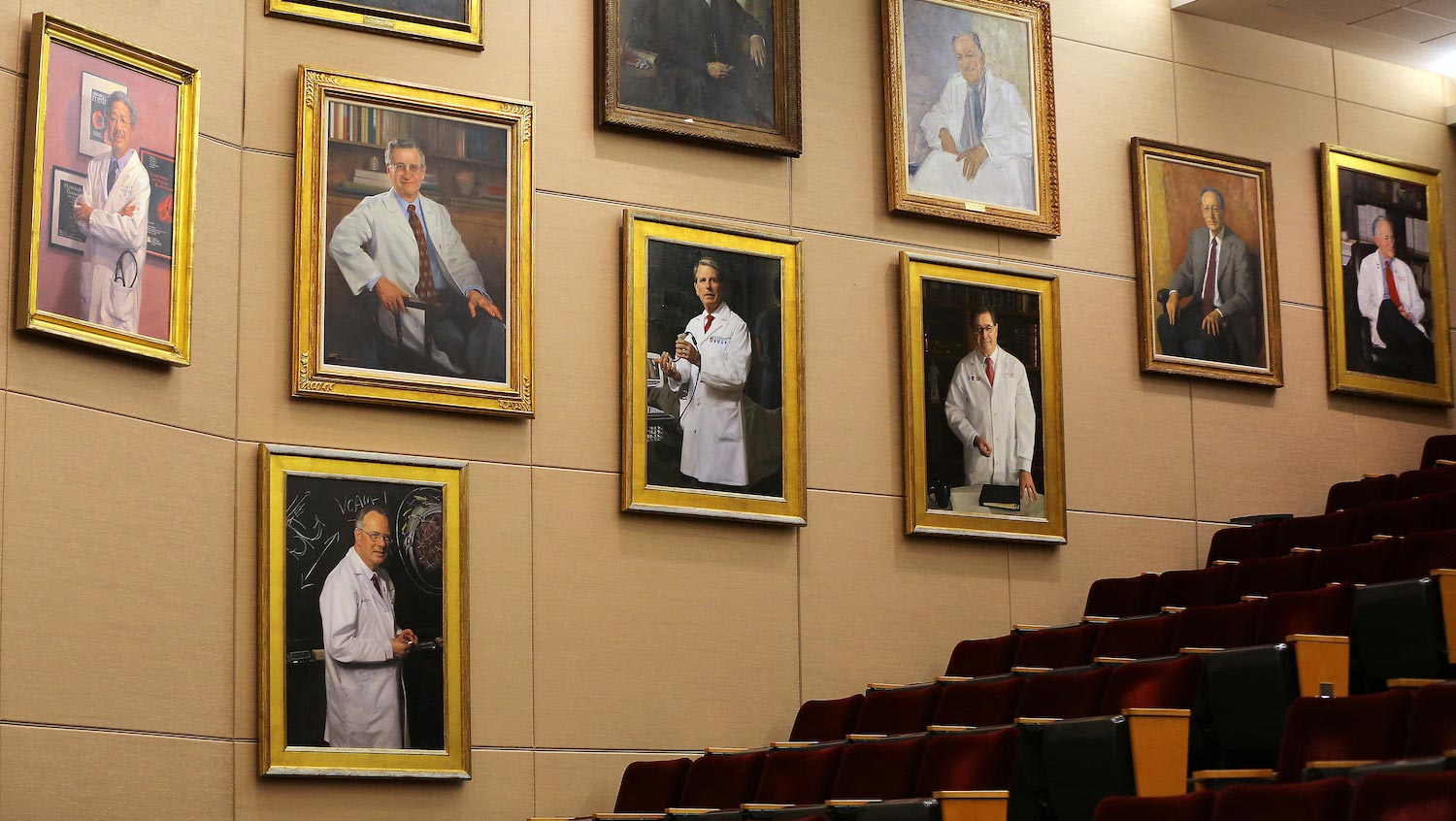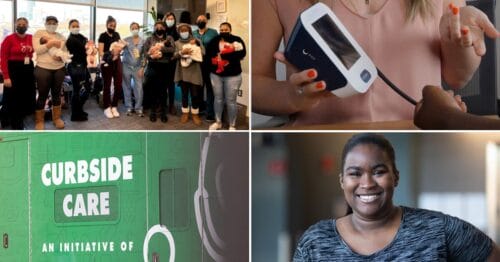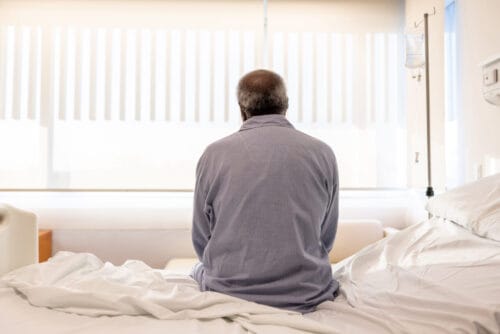
Getty Images
A grassroots, resident-led series of case conferences addresses implicit bias and structural racism in medical education and clinical practice.
An obese Latino boy with abdominal pain who’s sent home with Pepcid and is later found to have a tumor. A feverish toddler with sickle cell disease whose mother, after a charged interaction with emergency department staff, refuses to admit him. A teenage girl who asks about STI testing during a routine primary care visit and expresses ambivalence about the long-acting reversible contraception recommended by her provider.
Each day, in hospitals and doctor’s offices across the country, clinical interactions like these are subtly complicated by bias and racism. While that might seem obvious in light of the ongoing national conversation on race and diversity, an awareness of how these issues affect clinical practice and individual patient outcomes has been slow to make its way into medical education and training.
A series of case conferences at Boston Medical Center (BMC), known as Health Equity Rounds, has been steadily working to fill this gap for the past three years. A woke spin on the age-old morbidity and mortality case conference, Health Equity Rounds uses a curriculum of reflection, guided exercises, and discussion to encourage providers to examine those moments in their day-to-day practice when implicit bias and structural racism can creep in.
The case conferences, which were launched and are still facilitated by pediatrics residents, are notable for the way they invert the traditional hierarchy and power dynamic in medicine. The residents — the trainees at the bottom of the pecking order — are the ones at front of the room, educating faculty members who may have decades of experience.
It’s safe to say the residents are onto something. The conferences have expanded beyond pediatrics to include family medicine, internal medicine, and ob-gyn, and the residents have shared their curriculum with interested providers at institutions including Massachusetts General Hospital, Brigham & Women’s, Duke Children’s Hospital, and Children’s National. In October, the team will present their approach at the annual national conference of the American Academy of Pediatrics, in New Orleans.
Destiny Tolliver, MD, and Yuan He, MD, MPH, both third-year residents in the Boston Combined Residency Program (a joint program spanning BMC and Boston Children’s Hospital), were part of the original group that founded Health Equity Rounds in 2016. They sat down with HealthCity to share their experience leading the presentations and their vision for how medical education needs to evolve.
HealthCity: Why is implicit bias so important in medicine and medical education?
Destiny Tolliver (DT): A lot of what we do in medicine is really automated. There are so many things that we see frequently, back to back — and everything is very busy. There are those moments where you’re doing things automatically, and then there are moments where you have to slow yourself down and think a bit more, because a case is more difficult, or maybe the diagnosis is more rare, or things aren’t quite fitting into those patterns. Bias tends to play into that faster system, and because it has a role in how we go about our day-to-day work as physicians, it can therefore play a role in patient outcomes.
Yuan He (YH): So much of how we learn medicine is pattern recognition. From the beginning of medical school, when you’re studying, there are buzzwords you learn to look out for when you’re taking exams, which is the scaffolding for so much of our teaching. That creates illness scripts that we bring into our residency training. Residency is about refining those illness scripts, so that you start to recognize this patient’s sick, this patient’s not. That pattern recognition is super-helpful and important for a trainee, but it’s also what tends to make us more susceptible to bias — because implicit bias also is based on pattern recognition, and not being able to recognize when the pattern doesn’t quite fit. Patterns can be both helpful and harmful.
The presentations also cover structural racism, which is a huge topic in its own right. Why did you feel it was important to address bias and structural racism together?
DT: Even as we address our own internal biases, there are these larger systems of racism that impact people across all spectrums of life, whether as patients or as physicians. We’ve tried to put our smaller, more individual, discussions within the context of these larger systems, because they’re equally important. These systems impact all of our patients, and even if we were to fix our implicit biases, that still wouldn’t necessarily fix the patient outcomes without changing the systems.
Even as we address our own internal biases, there are these larger systems of racism that impact people across all spectrums of life, whether as patients or as physicians.
We have to address both things, and we can’t let ourselves off the hook by saying, “Oh, implicit bias is just the back of my mind, there’s nothing I can do about it.” We have to move that to the front of our mind, and we also have to think about how the systems we’re working within can be changed to improve the care of our patients.
How do you identify the cases to present at Health Equity Rounds?
YH: Since the beginning, we felt it was important that the conference was based around a real case. We ask people to submit examples of cases in which they’ve noticed that implicit bias played a part, and then a team of faculty and residents review the cases to determine which ones are most appropriate and adaptable to our format. Whenever possible, we ask the people involved in the case to attend the presentation. It has been incredibly powerful to have the provider say, “I felt that bias played a part” and acknowledge their own personal bias in a way that would perhaps feel a little more accusatory if they were presenting someone else’s case.
Health Equity Rounds is led by residents. Why did you take that bottom-up approach?
YH: One of the unique and exciting parts of Health Equity Rounds is that even from its inception it was primarily resident-driven. Different residents from various levels came together as a group to decide this was something we felt strongly about and devise the curriculum. A lot of the momentum has come from its being a grassroots effort and feeling like we have the ability to shape the content and the structure. It seems like the younger generation is more fluent in these issues and feels more comfortable raising and talking about them. It’s been a really interesting process seeing residents teach faculty about these things.
DT: The fact that it’s directed at faculty makes it feel different from similar concepts we’ve seen in the literature. A lot of the literature is directed at medical students or residents. We felt it was important to educate the faculty as people who are models for the residents and medical students, and who also help create the culture we’re all living and working within.
Was the faculty supportive of the idea?
DT: We were very supported. Residents give case conferences regularly in our program, but it’s also generally a supportive department. Where the most growth was needed was that the faculty are more used to clinical case conferences that focus deeply on the nuances of a case — the things that made a particular case complicated or difficult to diagnose. We tried to focus on bias and racism, which are far more uncomfortable to talk about.
How do people react to the presentations? Is there ever any tension or discomfort in the room?
YH: We’ve rarely seen any kind of visible reactions. Every now and then there is some of that quiet discomfort that comes when you say something that makes an audience recognize and grapple with their own biases.
DT: Where the discomfort becomes apparent is when people pivot to talking about the medical or clinical aspects of the case, rather than voicing actual discomfort. Early on in the process, there were times when you could see the conversation moving from where we wanted it to be back over to those clinical areas, which were generally just more comfortable for us. But I think we’ve seen a huge change. As we’ve continued, the audience has become very engaged, very supportive, and more willing to have those harder conversations and engage in the subject matter we’re trying to put forward.
Early on in the process, there were times when you could see the conversation moving from where we wanted it to be back over to those clinical areas, which were generally just more comfortable for us.
How has your involvement in Health Equity Rounds affected your own perspective and practice?
DT: I personally feel that I use these tools more frequently, just because I’ve talked about them so much. There will be times when I’m on rounds, or when I’m interacting with a patient or a family, that remind me of one of the cases we’ve presented, and I find myself trying to focus on why something may feel uncomfortable. It’s cool to feel that I’ve internalized this for myself and that I have some knowledge I can share with others.
YH: It’s made me feel more comfortable identifying and acknowledging when something has happened that could have been done differently. That sometimes feels very unnatural and uncomfortable, especially in the hierarchy of medicine, but because we’ve created this practice at least quarterly in these conferences, it makes it feel a little more okay.
What’s your ultimate goal? How would you like to see this subject matter incorporated in medical education?
DT: What I would love to see, as bias and structural racism become more widely known — since they are being spoken about, I think, in multiple institutions in different ways — is that larger institutions incorporate some kind of diversity and bias education in the curriculum. What we’ve seen, as we’ve done the research for our presentations, is that our medical education system is part of what perpetuates the bias and structural racism that impacts our patients. Things like test questions can perpetuate bias. There are systems in place that perpetuate long-standing health disparities, and I’d like for these systems to change the way that they approach teaching us and testing us, and the way that we take care of our patients.
YH: Systems change is really hard. Health Equity Rounds is just one part, but ideally, at some point in our lives, it would be great to look back on our two institutions and say, “This actually did move the needle.”
This interview has been edited and condensed.


